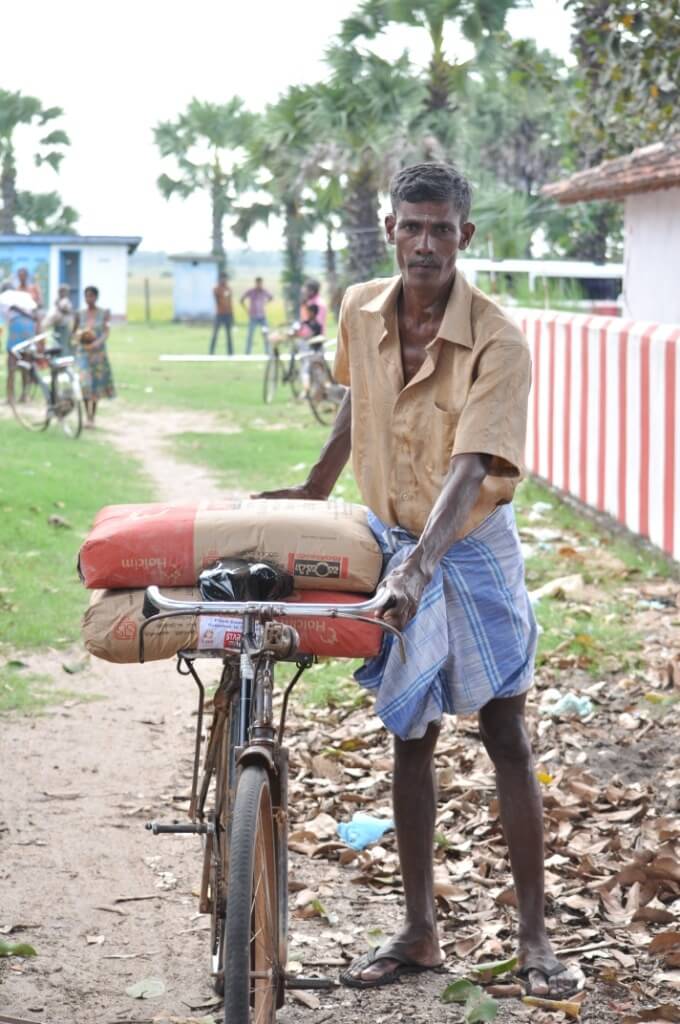Matching emergency response with local development sustainability: The importance of multi-level cooperation
It is common knowledge that strong collaboration with local partners allows an efficient delivery of outputs within a short period. The Start funded interventions after the recent flooding in Sri Lanka revealed that such collaboration is central not only for timely, one-off delivery; it is about properly articulating emergency responses with long-term development initiatives carried out by larger bodies, such as governments at all levels.
When flooding hit Sri Lanka in late December 2014, the Start Fund was activated to support emergency interventions in the central and eastern parts of the island, where 1.1 million people were affected. All three implementing agencies (CAFOD, CARE International and World Vision) reached more people than expected. This was mostly because increased information created improved efficiency following the establishment of strong links with partners at various levels.
Widening the network of contacts and partners during the emergency intervention contributed to the likelihood of sustainability for the projects. For example, in CAFOD’s intervention, collaboration with local partners encouraged an improved flow of information that increased the efficacy of activities. Thanks to carefully calculated decisions made by Caritas Sri Lanka (CAFOD’s partner), the project waited a few days for prices of essential goods to be adjusted by the incoming government (elections had taken place on January 8). Caritas was eventually able to obtain 300 additional packages (150 of food and 150 of NFI). This represented a 10% increase that allowed reaching 600 additional people. It confirmed that the quality of any intervention depends as much on creating the conditions for useful communication to flow and be assimilated into decision-making as it does on thorough design.
At the same time, the involvement of a multitude of different stakeholders during implementation proved to be essential at various stages of the projects, showing that collaboration permits longer-term sustainability of interventions. CARE International worked closely with local governments (District Secretariats), who were better placed to identify the magnitude of the disaster and determine which implementing agencies should intervene where. The District Secretariats coordinated the whole process to avoid duplication. Moreover, the Secretariats involved community leaders in the project’s implementation, so that they could help CARE International’s intervention to monitor the distribution of goods, particularly construction materials and the building up of shelters.
World Vision’s project relied on close, pre-existing relationships with government bodies from various levels, local NGOs, community associations (such as youth clubs) and health action teams. The Medical Officer of Health (MOH), for example, assisted in identifying families with malnourished children to be provided with food assistance to help prevent further deterioration. Other relationships helped ensure smooth implementation in identifying target groups, transporting goods and running distribution centres.
CAFOD’s experience with local rural development societies and women’s rural development associations also complemented the work of their partner, Caritas Sri Lanka, in providing assistance to small scale livestock development and small agriculture businesses. These activities were implemented in coordination with local government programmes, contributing to the sustainability of local development initiatives.
In sum, cooperating with local actors strengthened the projects by allowing them to integrate their emergency relief activities with long-term existing development initiatives in the local context. Multi-level collaboration in this context helped drive down costs, avoid duplication, monitor distribution, identify beneficiaries and complement ongoing programmes to improve effectiveness for people so severely affected.
Photo: CARE International

